Lichen uses by people: Perfume and Misc.
Back to: Lichen Natural History Index
Lichen uses by people: Perfume and Misc. Back to: Lichen Natural History Index |
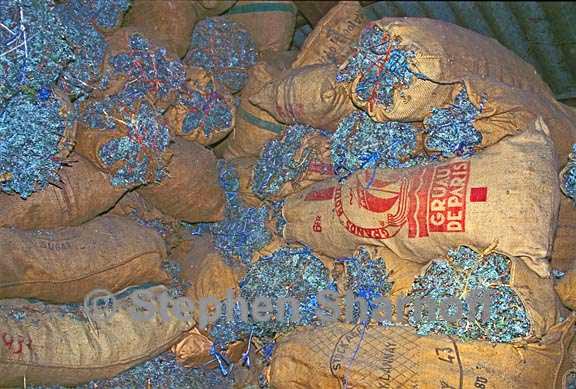 Burlap bags with the lichen, Pseudevernia furfuracea in a warehouse in France. The lichen is collected locally for use in making "concrète", an ingredient in the manufacture of perfume. |
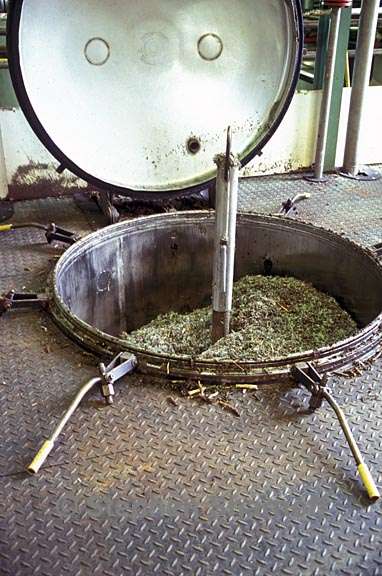 The lichen is cooked in vats to extract the concrète. Image 1 |
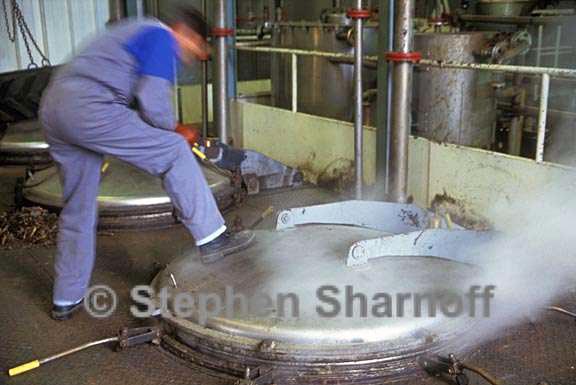 The lichen is cooked in vats to extract the concrète. Image 2 |
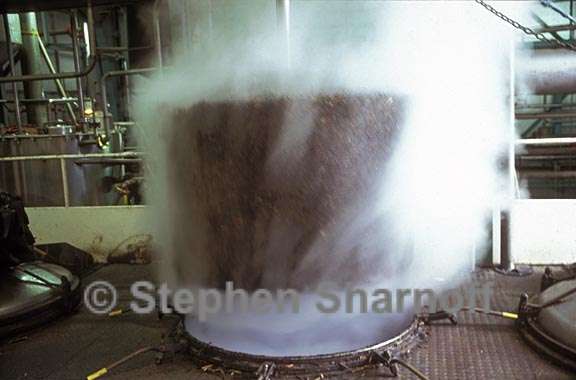 The lichen is cooked in vats to extract the concrète. Image 3 |
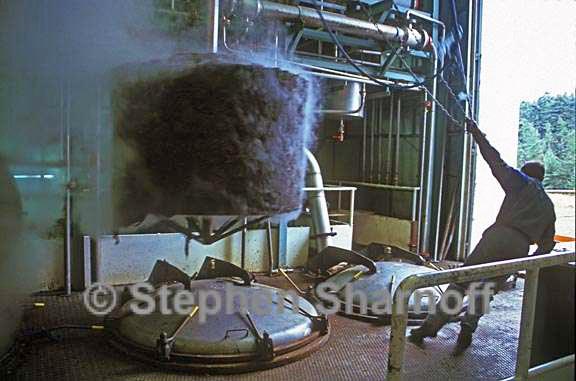 The lichen is cooked in vats to extract the concrète. Image 4 |
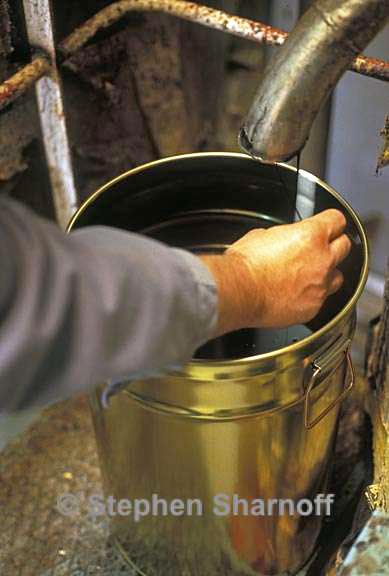 The liqued concrète, with a highly concentrated essence of lichen scent, is poured off into large cans. The cans will be shipped to Grasse, the center of the French perfume industry. |
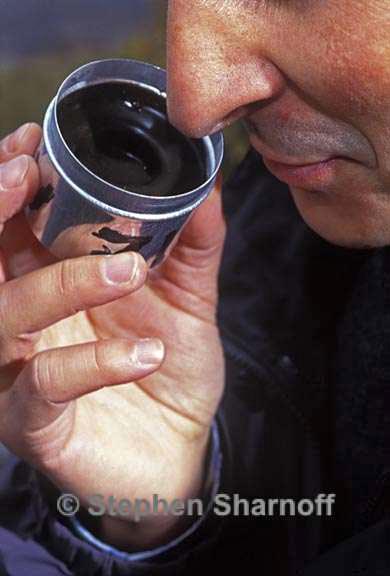 When dry the concréte, has the consistency of wax. The manager of the factory checks the fragrance of a test sample. In an interview for the Wall Street Journal Magazine, 2009, Jean-Claude Ellena, Master Perfumer for Hermès said, "I was an apprentice essential oilmaker in Grasse at the age of 16, on the night shift. Among other essential oils, we made a lot of oakmoss, and after I'd put the distiller on, I'd lie down on a bed of it and sleep." |
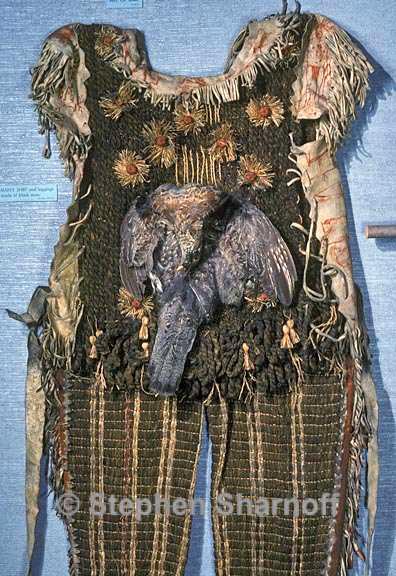 Shirt and leggings made of Bryoria lichen. Originally from southern British Columbia, the clothing is part of the collection of the American Museum of Natural History in New York. I wish to thank the Museum for permission to photograph the articles. |
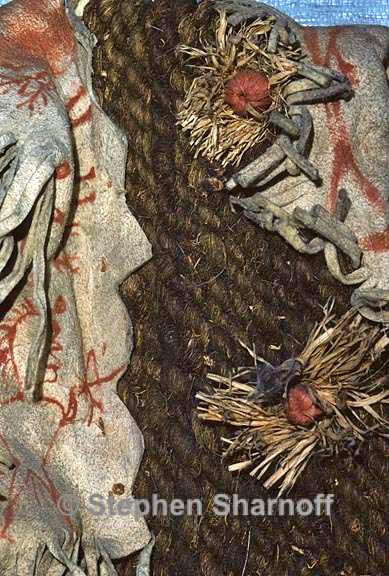 Detail of the Bryoria shirt. |
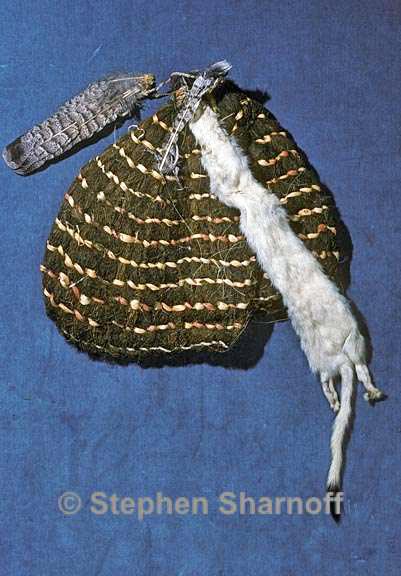 Bryoria cap with ermine |
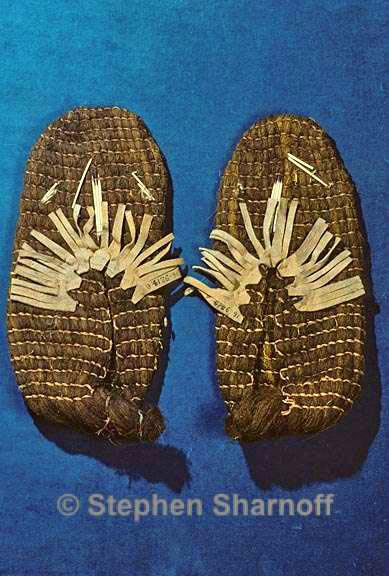 Bryoria shoes. |
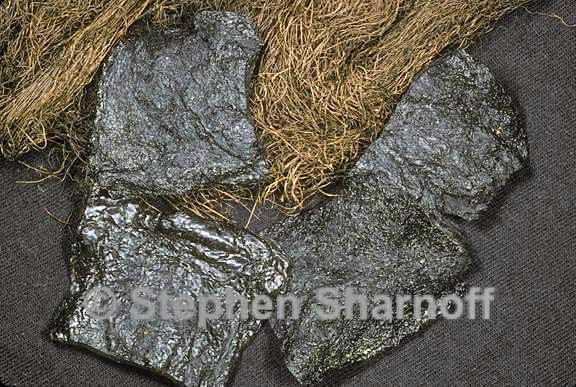 Cooked Bryoria looks a bit like asphalt. |
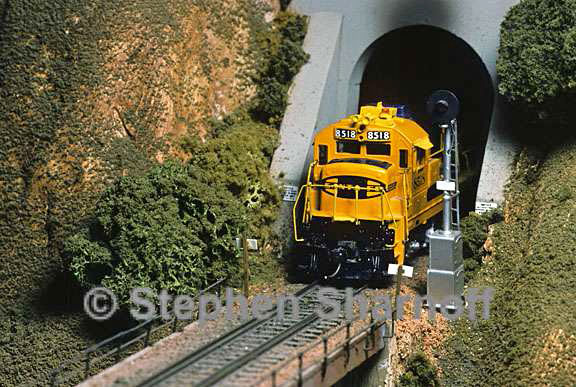 The shrubbery scenery for this HO scale model train is made from lichens. Image 1 |
 The shrubbery scenery for this HO scale model train is made from lichens. Image 2 |
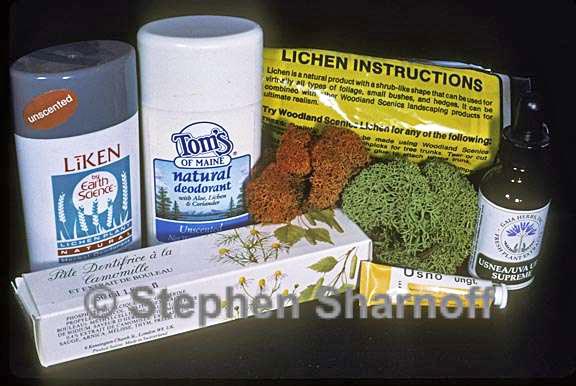 Some commercial products that use lichen. |
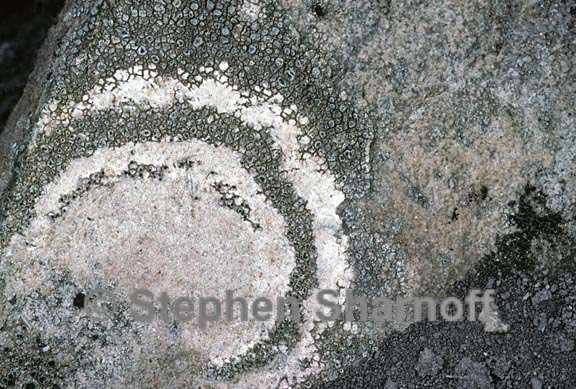 This pattern, a sort of pictograph, was found in northern New Mexico. It was created by scraping away some of the lichen growing on the stone, and it may be many decades old. |
Back to: Lichen Natural History Index |